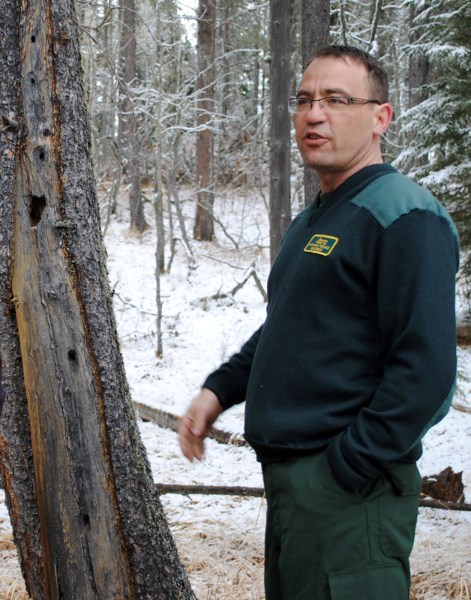With the 2013 fire season now underway, Environment and Sustainable Resource Development wildfire rangers say West Central Alberta homeowners should be creating “FireSmart” homes.
There are many preventive measures homeowners can take to protect not only themselves, but their neighbours as well, from hungry flames, ranger Blake Christianson told the Gazette.
Homeowners can thin out thick trees on their property and move combustible materials away from homes and other buildings, he said.
Trees should be thinned so that the tops are at least three to six metres apart.
Also, tree branches should be removed up to two metres from the ground. This provides less of a chance for fires to spread.
Flammable materials, such as firewood, should be stored at least 10 metres away from homes.
Grass should be kept trimmed and watered and twigs, needles and pine cones should be removed from lawns.
“Homeowners can screen their decks so embers don't get underneath,” he said.
Most house fires result from landed embers from backyard fires, he said.
Also, spruce trees are not ideal trees to plant around homes because they are the trees with the highest risk of catching fire, he said.
Aspen, poplar and birch have less flammable potential than spruce, pine and juniper.
Wildfire ranger Barry Shellian said there are only two days a year when aspen and poplar are easy to burn, when the buds are sticky.
Also referred to as “ladder trees”, spruce trees catch fire quickly because the branches reach the ground and give fuel to burn.
These are the trees that wildfire rangers are looking to dispose of first in forests and surrounding homes at risk.
The provincial FireSmart program was launched in the Sundre area in 2002 to help, in part, in the prevention of urban interface fires, which occur in built-up areas surrounded by forest.
“FireSmart is not fireproof, but we can reduce the volume,” said Shellian.
May long weekend is the busiest time of the year for forest fires, said Christianson.
It's generally the first time of the year when people get outside and are able to have a fire after a long winter, he said.
About 95 per cent of the fires that happen that weekend are human caused, which makes it especially important to be FireSmart during that time, he said.




